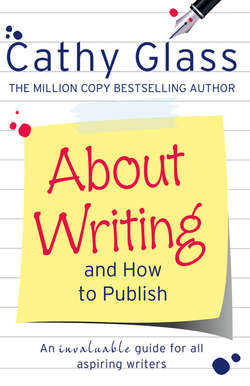Читать книгу About Writing and How to Publish - Cathy Glass, Cathy Glass - Страница 10
ОглавлениеThe creative process is usually helped by having a writing routine: a place and time set aside for you to write and with a little ritual leading up to the writing. If you approach your writing in the same way every day, very soon you’ll find that by the time you sit down to write your subconscious will be fired up and ready to go. Your imagination will instantly start producing the words you need to write creatively. Like Pavlov’s dogs, which were trained to expect food and therefore salivate whenever they heard a bell ring, you can train your creative juices to start flowing on your command by following your writing routine. The process is called classical conditioning and is triggered by the ritual of your writing routine.
I’ve had the same writing routine for the last fifteen years: I rise early (at approximately the same time each morning), put on my joggers and a comfortable top and creep downstairs so I don’t disturb my family. I make a large mug of coffee and then go through to the front room where I collect my paper, pen and the text I’ve written the day before. I then go into the living room and quietly close the door. I sit in the same chair and, with my coffee within reach, I begin by reading what I’ve written the day before, editing as necessary. By the time I come to the end of the previous day’s work, my new words are ready to flow. I still use pen and paper for the first draft. I write very quickly, often unaware of my surroundings as my pen dashes across the page. As the author Ray Bradbury said: ‘My stories run up and bite me on the leg – I respond by writing down everything that goes on during the bite. When I finish, the idea lets go and runs off.’
I know exactly what this author means. When ‘the idea has run away’ and my basket of words is empty I type what I’ve written into my computer – first the revised draft from the day before, and then my new work. I print out the new pages ready for revising the following morning. This is my writing routine and it works for me. Your routine is likely to be different to mine, to suit your work and family commitments, and will also take into account when you are at your most creative. Some writers are early birds, like me; some are night owls, while a few lucky writers can turn on their creative juices at any time of the day or night. However, most writers (although not all) need silence and no interruptions while they are writing that first creative draft. I certainly do. I can’t even have music playing softly in the background while I’m concentrating. Stephen King, the bestselling author, calls it ‘the door closed’; that is to say his study door has to be closed against interruptions while he is writing creatively. You’ll soon discover the situation and time that suits you best and, once you do, I recommend that you keep to your routine. It will act as a catalyst for your day’s creative writing.
‘What shall I use to write?’
… Some people ask. You can use whatever you like for that first draft, which only you will see: pen and paper, Dictaphone or you can type it straight into the computer. However, if you are intending to publish your work, at some point you will need to type it into a word-processing document (such as Microsoft Word) so that it can be sent electronically by email. I explain about publishing in the third section of this book. Whatever medium you use for your writing, make sure you have at least one copy of your work. If you are using only pen and paper then I suggest you photocopy your work each day. Once your work is on the computer, back it up by saving it on a ‘memory stick’, a CD or to a ‘cloud’ – where a third party stores your data on the internet. I can’t emphasize enough how important it is to back up your work. You’ve invested a lot of time and energy in your story and paper copies can become lost or accidently thrown away, and computers do fail. I always have three copies of my work: the paper copy, on computer hard drive and on ‘memory stick’.
